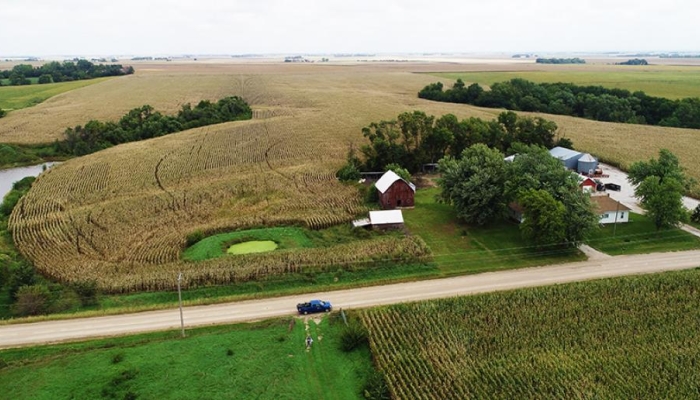Windbreaks: Why Bother?
According to the University of Nebraska Extension Office, there are plenty of reasons to plant trees.
- Windbreaks are perfect for Nebraska, as they provide the greatest benefits in areas with high winds, large amounts of snow, extreme temperature fluctuations, or minimal natural forest cover.
- Well-designed windbreaks reduce the amount of energy needed to heat and cool your home by 20 to 40 percent. When winter winds are combined with low temps, the resulting wind chill may create dangerous conditions. A moderately dense windbreak will reduce a 20 mph wind to approximately 5 mph out to a distance of 5H (H=height of windbreak). The trees keep you warmer in winter by reducing windspeeds and cooler in summer by providing shade.
- A windbreak can be a natural air freshener. Trees and shrubs act as a natural filter, catching particles that carry odor. Some odors will be absorbed by the plants and others will be masked by more desirable smells from aromatic leaves or flowering shrubs.
- Multirow windbreaks provide essential nesting, feeding, singing and breeding habitat for many birds and animals. They also provide a safe travel corridor for wildlife between feeding, watering, and resting sites. By varying tree and shrub species, you can create a smorgasbord of seeds, nuts, and fruits for area wildlife. They also sustain birds that eat pests, improve hunting opportunities, and provide a place for family outdoor activities.
Many windbreaks planted in the 1930s and 40s are losing their effectiveness due to age, poor health, or neglect. All windbreaks, even well-designed ones, need regular maintenance in order to maintain their overall structure and to continue to function as effective wind barriers. Renovating a windbreak can be a difficult task. Help in assessing your windbreak and determining the best renovation techniques is available from the NRD.
Before you tear out an old windbreak, visit with the NRD to see what could be done to renovate it instead. Perhaps some rows could remain while others could be removed and replanted. New species could be introduced for new purposes. Even if the entire windbreak needs to be replaced, it is better to do it in stages, as the older trees will shelter the younger trees and help them get established more quickly.
Older windbreaks have unique benefits, as they are more likely to be adopted as shelter by hawks, owls, and cavity nesting birds. Snags are trees that have died and possibly lost limbs, but the tops are still standing. Snags are great for wildlife. If they are not where they pose a safety hazard, consider saving part of an older windbreak for wildlife. Owls, woodpeckers, and chickadees will thank you for the additional foraging and shelter.
For the best wildlife benefits, a shelterbelt should have a developed tree canopy and an understory that includes shrubs and herbaceous plants that provide both food and cover. Some plant species provide more wildlife benefits than others and a variety of species is necessary to provide the range of habitat needs of most wildlife. In general, greater windbreak width provides better winter protection. Including a variety of trees and shrubs in the windbreak planting gives a more naturalistic landscape appearance and improves wildlife values for more species. It also reduces the chances of disease or insect pest problems.

